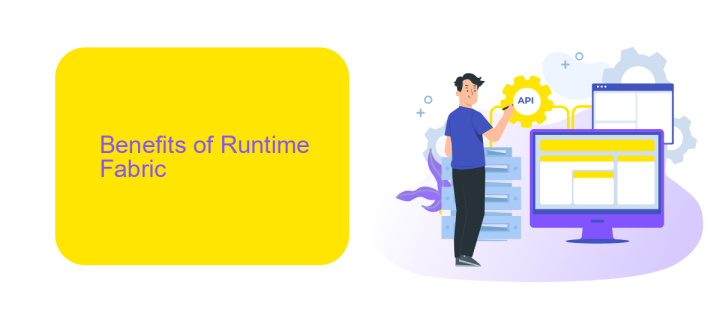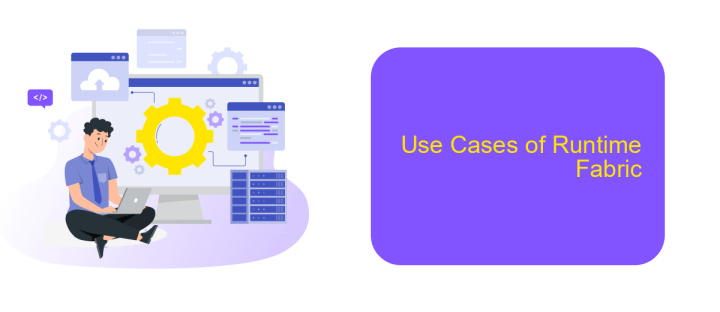What is Runtime Fabric in MuleSoft
Runtime Fabric in MuleSoft is a powerful, hybrid deployment model that enables organizations to run Mule applications across any environment, whether on-premises, in the cloud, or in a containerized setup. It provides enhanced flexibility, scalability, and control, making it easier for businesses to manage their integration workloads efficiently. This article explores the key features and benefits of using Runtime Fabric in MuleSoft.
Introduction to Runtime Fabric
Runtime Fabric in MuleSoft is a container service that enables you to deploy and manage Mule applications across various environments, including on-premises and cloud. This advanced infrastructure solution provides a seamless way to scale and manage your integrations, ensuring high availability and performance.
- Enhanced scalability: Easily scale your applications to meet changing demands.
- Multi-cloud support: Deploy applications across different cloud providers.
- High availability: Ensure continuous operation with built-in failover mechanisms.
- Centralized management: Monitor and control your applications from a single interface.
By leveraging Runtime Fabric, organizations can streamline their integration processes and improve operational efficiency. For example, services like ApiX-Drive can be integrated with MuleSoft to automate data transfer between various systems, reducing the need for manual intervention and minimizing errors. This combination of tools allows businesses to focus on their core activities while maintaining robust and reliable integrations.
Benefits of Runtime Fabric

Runtime Fabric in MuleSoft offers numerous benefits, particularly for organizations aiming to streamline their integration processes. One of the key advantages is its ability to provide a highly scalable and resilient infrastructure, ensuring that applications run smoothly even during peak loads. This capability is crucial for businesses that experience fluctuating demand and need to maintain consistent performance. Additionally, Runtime Fabric supports multi-cloud and hybrid environments, allowing organizations to deploy applications across different platforms without compromising on performance or security.
Another significant benefit is the simplified management and deployment of integrations. With services like ApiX-Drive, businesses can easily configure and automate their integration workflows, reducing the time and effort required to manage them manually. This not only improves operational efficiency but also minimizes the risk of errors. Furthermore, Runtime Fabric enhances security by offering built-in features such as role-based access control and encryption, ensuring that sensitive data remains protected. Overall, these benefits make Runtime Fabric an invaluable asset for any organization looking to optimize its integration strategy.
Key Features of Runtime Fabric

Runtime Fabric in MuleSoft is a versatile and powerful solution designed to streamline the deployment and management of Mule applications across various environments. It offers a range of features that enhance performance, scalability, and reliability, making it an essential tool for modern enterprises.
- Scalability: Automatically scales applications based on demand, ensuring optimal performance and resource utilization.
- High Availability: Provides built-in redundancy and failover mechanisms to ensure continuous operation and minimal downtime.
- Multi-Cloud Support: Allows deployment across different cloud providers, including AWS, Azure, and Google Cloud, as well as on-premises environments.
- Enhanced Security: Offers robust security features, including encryption, access controls, and compliance with industry standards.
- API Management: Integrates seamlessly with ApiX-Drive, simplifying the process of managing and deploying APIs with automated workflows and real-time monitoring.
These key features of Runtime Fabric make it an indispensable tool for businesses looking to enhance their integration capabilities, ensuring that applications run smoothly and efficiently in any environment. By leveraging these features, organizations can achieve greater agility, security, and performance in their digital transformation efforts.
Use Cases of Runtime Fabric

MuleSoft's Runtime Fabric offers a versatile platform for managing and deploying APIs and integrations across various environments. It provides a seamless experience for developers and businesses to handle complex integration scenarios with ease. By leveraging the capabilities of Runtime Fabric, organizations can ensure high availability, scalability, and security for their applications.
One of the primary use cases for Runtime Fabric is the deployment of APIs and integrations in hybrid cloud environments. This allows businesses to run their applications on-premises, in the cloud, or in a combination of both, ensuring flexibility and control over their IT infrastructure. Additionally, Runtime Fabric supports containerization, making it easier to manage and scale applications dynamically.
- Hybrid cloud deployments for flexible IT infrastructure management
- Containerization support for dynamic scaling and management
- Enhanced security and compliance for sensitive data
- Streamlined API and integration management with tools like ApiX-Drive
Another significant use case is the integration of various SaaS applications and on-premises systems. With Runtime Fabric, organizations can efficiently connect disparate systems, ensuring smooth data flow and operational efficiency. Tools like ApiX-Drive further simplify this process by providing a user-friendly interface for setting up and managing integrations, thereby reducing the time and effort required for complex integration tasks.
Conclusion
In summary, MuleSoft's Runtime Fabric is a versatile and robust solution that enhances the deployment and management of applications across various environments. By leveraging this technology, organizations can achieve greater flexibility, scalability, and control over their integration processes, ensuring seamless operations and optimized resource utilization.
Moreover, integrating with services like ApiX-Drive can further streamline the setup and management of integrations. ApiX-Drive offers a user-friendly interface and powerful automation tools, making it easier to connect disparate systems and automate workflows. Together, MuleSoft's Runtime Fabric and ApiX-Drive provide a comprehensive and efficient approach to modern integration challenges, empowering businesses to innovate and adapt quickly in a dynamic digital landscape.


FAQ
What is MuleSoft Runtime Fabric?
How does Runtime Fabric enhance the deployment process?
Can I use Runtime Fabric with existing Mule applications?
What are the benefits of using Runtime Fabric?
How does Runtime Fabric support hybrid cloud deployments?
Time is the most valuable resource for business today. Almost half of it is wasted on routine tasks. Your employees are constantly forced to perform monotonous tasks that are difficult to classify as important and specialized. You can leave everything as it is by hiring additional employees, or you can automate most of the business processes using the ApiX-Drive online connector to get rid of unnecessary time and money expenses once and for all. The choice is yours!

